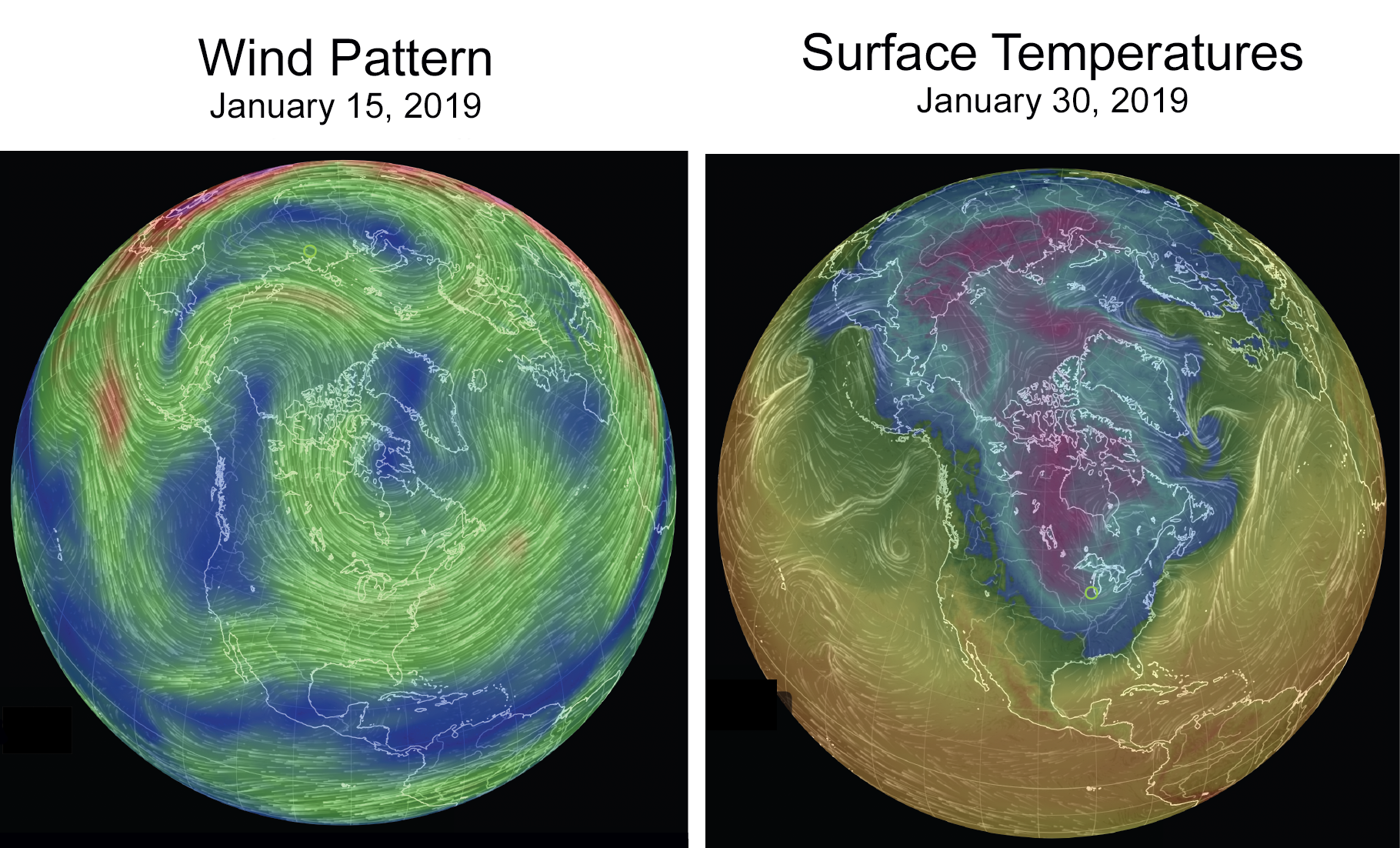In January 2019, a pattern of high-altitude winds in the Arctic, better known as the polar vortex, weakened, sweeping frigid air over North America and Europe in the second half of the month. Arctic sea ice extent remained well below average, but temperatures in the far north were closer to average than in past years.
 The left image shows atmosphere winds (70 millibars, about 60,000 feet altitude) on January 15, 2019. North America is in the center of this view. The right image shows surface air temperatures on January 30, 2019. For reference, Chicago was -26 degrees Celsius (-15 degrees Fahrenheit) on this morning (dark blue color). Credit: earth.nullschool.net
The left image shows atmosphere winds (70 millibars, about 60,000 feet altitude) on January 15, 2019. North America is in the center of this view. The right image shows surface air temperatures on January 30, 2019. For reference, Chicago was -26 degrees Celsius (-15 degrees Fahrenheit) on this morning (dark blue color). Credit: earth.nullschool.net
Arctic sea ice extent for January averaged 13.56 million square kilometers (5.24 million square miles). This was 860,000 square kilometers (332,000 square miles) below the 1981 to 2010 long-term average sea ice extent, and 500,000 square kilometers (193,000 square miles) above the record low for the month set in January 2018. January 2019 was the sixth lowest January extent in the 1979 to 2019 satellite record.
Continue reading at: Polar vortex breakdown | Arctic Sea Ice News and Analysis

Arctic sea ice extent for January averaged 13.56 million square kilometers (5.24 million square miles). This was 860,000 square kilometers (332,000 square miles) below the 1981 to 2010 long-term average sea ice extent, and 500,000 square kilometers (193,000 square miles) above the record low for the month set in January 2018. January 2019 was the sixth lowest January extent in the 1979 to 2019 satellite record.
Continue reading at: Polar vortex breakdown | Arctic Sea Ice News and Analysis






